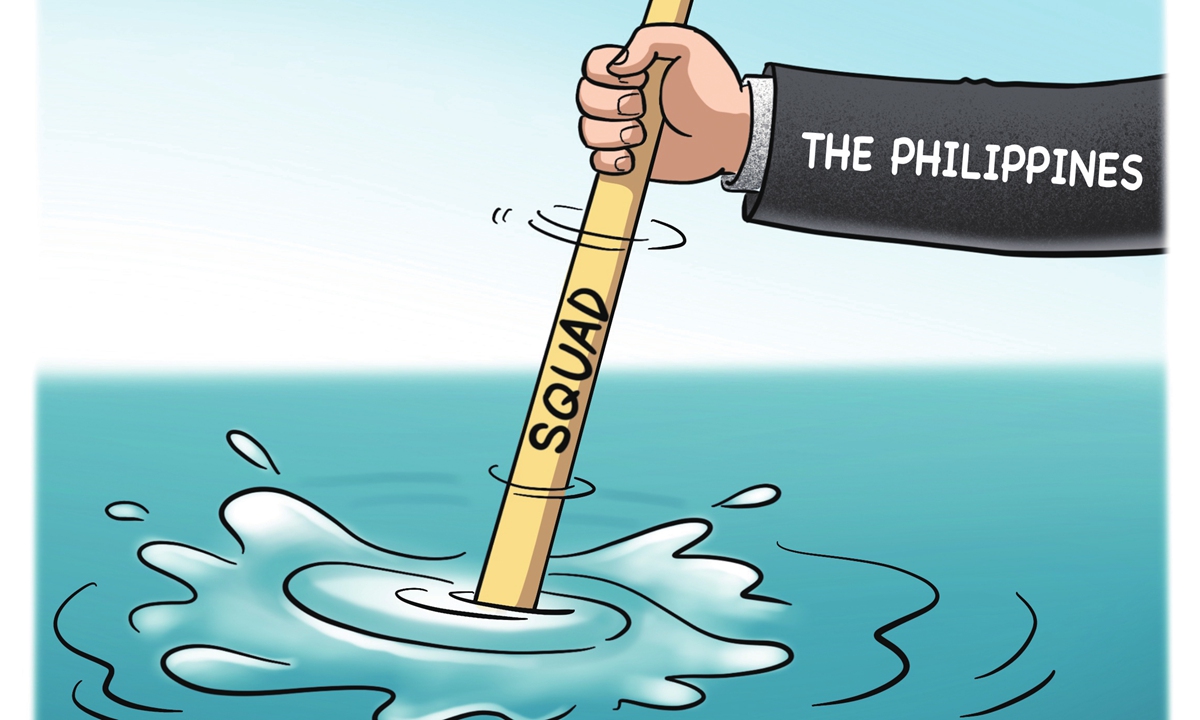

Illustration: Liu Rui/GT
According to Philippine media reports,mk the US, the Philippines, Australia, and Japan held a joint maritime exercise in the South China Sea on Wednesday. At the same time, Philippine media did not hesitate to hype the so-called Chinese "monster ship." But the real question is: Who is truly creating the "monsters" that are disrupting peace in the South China Sea? The answer is clear.
The Wednesday exercise is the first involving these four nations after the new US administration took office. An American scholar claimed that this drill "is further evidence that a US-Japan-Australia-Philippines quadrilateral is continuing to take shape." This emerging quadrilateral group is referred to as the "Squad."
While the Philippines crafts a "victim" image to gain international sympathy, it also draws in external powers to flex their military muscles in the South China Sea in an attempt to strengthen its geopolitical leverage. Manila's calculation is clear: By having a group of "stronger friends" back its provocations, it can act with greater impunity, creating tension in the South China Sea. This fuels the emergence of the Squad - its first joint maritime exercise took place in April of last year.
Some scholars claimed that "the Squad essentially adds an 'S' for security to the Indo-Pacific architecture of minilateral cooperation." But in essence, the Squad is a patched-together Frankenstein, a loose bloc of interests that does little more than fuel instability in the South China Sea. Its so-called unity is nothing but a facade, built on an opportunistic grouping that only serves to further stir an already tense situation.
Perhaps what the "S" truly stands for is "sabotage" and "strife." Every joint US-Japan-Australia-Philippines military exercise, while officially claiming to promote "regional peace and stability," only further destabilizes the South China Sea situation.
On the other hand, with the backing of "small circles" such as the Squad, the Philippines has become a bolder troublemaker in the South China Sea, like "a vine with growing toxic thorns." The more the Philippines leans on external support, including that from the Squad, the more it deepens the roots of discord, turning itself into a destructive force that destabilizes the region.
The uncertainty from the US government has led many to question the long-term sustainability of US-involved partnerships and alliance networks, let alone a loose group like the Squad. Therefore, the future of the Squad remains uncertain. However, regardless of how Washington shifts policies, the US will likely continue to use the Philippines to stir up tensions in the South China Sea to serve its own regional strategy.
Earlier this week, the US and the Philippines held joint air patrols, which Senior Colonel Li Jianjian, spokesperson of the air force of the Chinese People's Liberation Army's Southern Theater Command, called "an attempt to undermine peace and stability in the South China Sea region."
Besides, on the very same day as the Squad's joint maritime exercise, US Defense Secretary Pete Hegseth reaffirmed Washington's "ironclad" commitment to the US-Philippines Mutual Defense Treaty in a phone call with his Philippine counterpart. For a long time, it has been this "ironclad" commitment that has driven the Philippines to become increasingly aggressive on the South China Sea issue. Yet, when the situation spirals out of control, will Manila realize that the slogan is merely a billboard used by the US to maintain its regional influence, not a refuge that the Philippines can rely on? After all, US "commitments" have always been based on interests, as some of US' allies have already discovered.
Peace and stability in the South China Sea depend on dialogue and cooperation, not on creating one "monster" after another to divert attention from provocative actions. Relying on external forces for support to incite tensions will only complicate the situation and push peace further away.